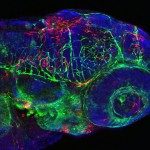Lien vers Pubmed [PMID] – 28539441
J. Virol. 2017 08;91(15)
Polyamines, which are small positively charge molecules present in all cells, play important roles in the replication of DNA and RNA viruses. Chikungunya virus (CHIKV) relies on polyamines for translation of the viral genome upon viral entry, and pharmacological depletion of polyamines limits viral replication. However, the potential development of antiviral resistance necessitates a better understanding of how polyamines function and can be targeted via compounds that alter polyamine levels. We have isolated CHIKV that is resistant to polyamine depletion and contains two mutations in the nonstructural protein 1 (nsP1)-coding region in combination with a mutation to the opal stop codon preceding nsP4. These mutations, in addition to promoting viral replication in polyamine-depleted cells, confer enhanced viral replication and The nsP1 mutations enhance membrane binding and methyltransferase activities, while the stop codon mutation allows increased downstream translation. These mutations, when combined, enhance viral fitness, but individual mutants are attenuated in mosquitoes. Together, our results suggest that CHIKV can evolve resistance to polyamine depletion and that pharmaceuticals targeting the polyamine biosynthetic pathway may be best used in combination with other established antivirals to mitigate the development of resistance. Chikungunya virus is a mosquito-borne virus that has infected millions worldwide. Its expansion into the Americas and rapid adaptation to new mosquito hosts present a serious threat to human health, which we can combat with the development of antiviral therapies as well as understanding how these viruses will mutate when exposed to antiviral therapies. Targeting polyamines, small positively charged molecules in the cell, may be a potential strategy against RNA viruses, including chikungunya virus. Here, we have described a virus that is resistant to polyamine depletion and has increased fitness in cells and in full organisms. Mutations in viral genome capping machinery, membrane binding activity, and a stop codon arise, and their altered activities enhance replication in the absence of polyamines. These results highlight strategies by which chikungunya virus can overcome polyamine depletion and emphasize continued research on developing improved antiviral therapies.

